What is Pilling: Causes, Prevention, Removal: Easy Guide
Have you ever found small, fuzzy balls on your favorite sweater or t-shirt? Many people might describe this as their clothes ‘getting fuzzy balls’ or simply ‘bobbling’. These little balls are known as pilling. This article will explain what pilling is, why it happens to your clothes, and what you can do to stop it.
We’ll also show you easy ways to remove these fuzzy balls if they’ve already appeared. Pilling is a very common issue with clothes, but don’t worry! There are simple ways to deal with it.
1. What exactly is pilling?
Pilling is when tiny, tangled balls of fiber appear on the surface of your fabric. Fibers are the very small threads that make up yarn, and yarn is like a thicker thread made from many small fibers twisted together. When these fibers get loose and tangle together, they form pills. Pills form mainly due to rubbing – also known as friction or abrasion (the process of scraping or wearing something away).
When your clothes rub against themselves (like sleeves against the body) or other surfaces (like a backpack or even in the washing machine), some of the tiny fibers can break or get pulled out from the fabric. These loose fibers then get tangled up with each other, creating those little balls or ‘pills’.
It’s like tiny knots forming on your clothes. You can easily see pills on fabrics. They make clothes look a bit old, fuzzy, or not well cared for, even if the clothes are new. You’ll often see them on items like sweaters, knit t-shirts, leggings, and sometimes even on couches or blankets.
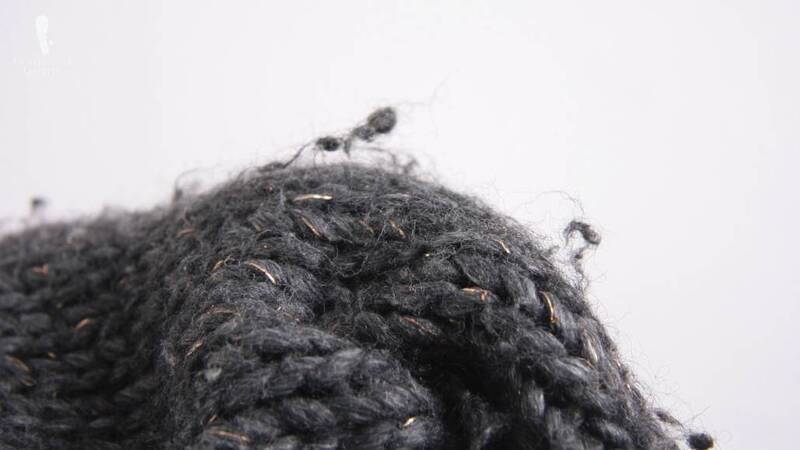
2. Why does my fabric pill?
Several factors contribute to why your clothes might develop pills. Understanding these can help you prevent them.
2.1 Friction and abrasion: The #1 cause
The biggest reason clothes get pills is from rubbing. This rubbing is called friction or abrasion. It happens all the time when you wear your clothes, as friction occurs when different parts of the fabric rub against each other or other surfaces.
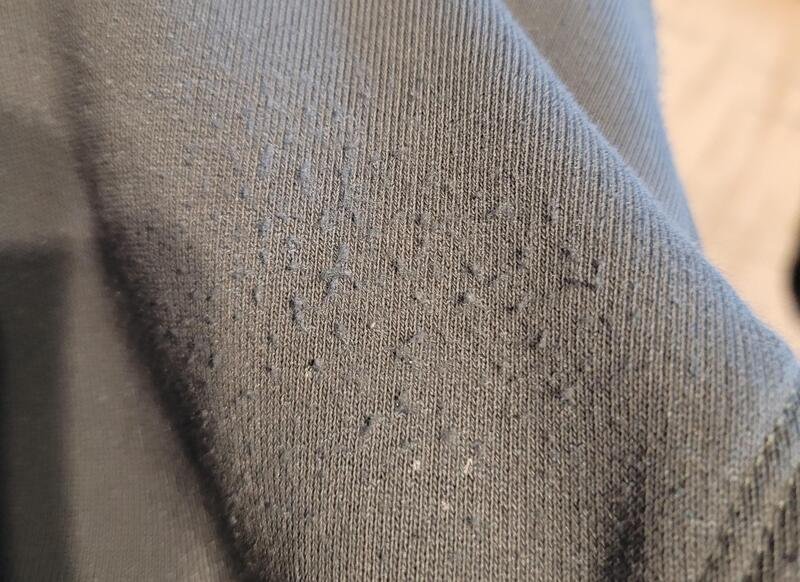
2.2 Fiber characteristics
The nature of the fibers themselves plays a significant role. The length of the tiny fibers used to make the yarn in your fabric matters a lot. Fabrics made with shorter fibers (like some types of cotton, wool, and many man-made or synthetic fabrics) are more likely to pill. This is because short fibers have more ends that can stick out and get tangled.
Fabrics made with long, smooth fibers (like silk or high-quality long-staple cotton) are usually stronger and pill less because the fibers are more secure within the yarn. If the fibers themselves are weak, they break more easily when rubbed. These broken fiber pieces are then free to form pills. Stronger fibers can resist breaking from friction better.
2.3 Fabric construction
How the fabric is constructed also plays a big part. If the threads (yarns) in a fabric are loosely woven or knitted together (weave is how the threads are crisscrossed or looped together to create the fabric sheet), there’s more space for fibers to move around, come loose, and tangle.
Tightly woven or knitted fabrics hold the fibers more securely, making it harder for them to pill. Yarn is made by twisting fibers together. If the yarn isn’t twisted very tightly, individual fibers can escape more easily from the yarn structure and contribute to pilling. A tighter twist makes the yarn stronger and keeps fibers locked in.
2.4 Washing and drying methods
The way you wash and dry your clothes can significantly increase pilling. Using harsh detergents can weaken fibers. Washing for too long, using very hot water, or using a washing machine cycle with a lot of strong spinning and tumbling (agitation) creates more friction and stress on fabrics. Overdrying or using high heat in the dryer can also damage fibers and make them more prone to pilling.
3. Which fabrics are most prone to pilling?
It’s true that some types of fabric will get those fuzzy pills much more easily than others. Knowing which ones can help you choose clothes or know which items need extra care.

Common pilling-prone fabrics:
- Wool: Wool is a natural fiber that can pill, especially softer types like lambswool, merino, and cashmere. Sweaters made from these wools are common culprits.
- Cotton: While cotton is often durable, it can pill, particularly if it’s made with shorter cotton fibers or if it’s a looser knit (like in some t-shirts or sweatshirts).
- Polyester and polyester blends: Polyester is a very common man-made (synthetic) fabric. Pure polyester and fabrics that are a mix of polyester and other fibers (like cotton-polyester blends) are often prone to pilling. The pills on polyester can be quite tough to remove.
- Acrylic: Acrylic is another man-made fiber often used in sweaters and blankets because it’s soft and warm like wool, but it is notorious for pilling easily.
- Rayon (viscose): Rayon is made from wood pulp but processed with chemicals. It can be soft and drapey, but it’s also known to pill, especially when it gets wet and rubbed.
- Fabric blends: When different types of fibers are mixed together to create a fabric, pilling can be unpredictable. Often, if one of the fibers in the blend is prone to pilling (like polyester mixed with cotton), the fabric may pill. The stronger fiber might hold onto the pills made from the weaker fiber.
Generally, these fabrics pill more easily because they might be made with shorter fibers, the fibers themselves might not be very strong, or the way the fabric is knitted or woven allows fibers to come loose more easily when rubbed.
Fabrics less likely to pill: On the other hand, some fabrics are naturally more resistant to pilling. These include:
- Silk: A strong, smooth natural fiber.
- Linen: Made from flax, its fibers are long and strong.
- High-quality, tightly woven synthetics: Some modern man-made fabrics are engineered to be very durable and tightly constructed, which helps prevent pilling (e.g., some high-performance sportswear fabrics).
- Denim: Usually tightly woven and made from strong cotton yarns.
4. Does pilling mean my clothes are low quality?
A lot of people think that if their clothes start to pill, it must mean they are cheap or poorly made. But this isn’t always the case. Even expensive, high-quality garments made from very fine and delicate natural fibers, like soft cashmere sweaters, can pill. Pilling is fundamentally about how fibers behave when they are rubbed – it’s a natural characteristic of many textiles, regardless of price.
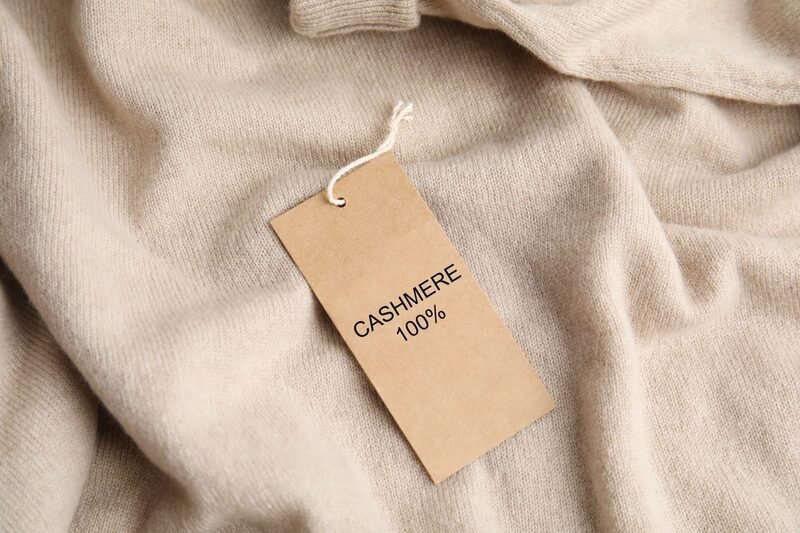
Sometimes, the softest, most luxurious fibers are also the most delicate and more likely to break and pill. However, fabric quality can influence how much or how quickly an item pills. Higher-quality garments might use:
- Longer fibers: As we learned, longer fibers are less likely to pill.
- Tighter weaves or knits: These constructions hold fibers more securely.
- Stronger yarns: Yarns that are well-twisted and strong resist breaking.
- Anti-pilling finishes: Some manufacturers apply special treatments to fabrics to make them more resistant to pilling.
Often, pilling is more a result of how much friction the garment experiences during wear and how it’s cared for (especially during washing and drying), rather than just its initial quality. An expensive sweater washed harshly will likely pill more than a less expensive one washed gently.
5. How to prevent pilling on clothes
The best way to deal with pilling is to try and stop it from happening in the first place! Here are some simple things you can do:
5.1 Smart shopping habits
- Choose fabrics wisely: When you’re buying new clothes, feel the fabric. Tightly woven or knitted fabrics generally resist pilling better than loose, lofty ones. Look for fabrics known to be less prone to pilling if this is a big concern for you.
- Check for ‘anti-pill’ claims: Some garments are made with fabrics that have an ‘anti-pill’ finish or a ‘pilling resistance rating’ (a measure of how well a fabric resists pilling) mentioned on the tag or label. These are designed to pill less.
5.2 Gentle laundry practices
- Turn clothes inside out: Before washing, always turn garments that might pill (like sweaters, knits, and dark items) inside out. This means the ‘outside’ surface gets less rubbing during the wash.
- Use a garment bag (mesh laundry bag): For delicate items or those very prone to pilling, place them in a mesh laundry bag before putting them in the washing machine. This protects them from snagging and excessive friction with other clothes.
- Wash with care by using cold water (hot water can be harsh on fibers) and choosing the gentle cycle on your machine (less agitation and shorter spin times).
- Use a gentle detergent: Harsh detergents can damage fibers and make them more likely to break and pill. Opt for a mild, gentle laundry soap.
- Don’t overload the washer: Avoid packing the washing machine too full. Clothes need room to move freely. Overcrowding increases friction.
- Fabric softener – use with caution: Fabric softeners can reduce friction between fibers by coating them. However, use them sparingly and as directed. Some can cause build-up over time or may not be suitable for all fabric types (always check the care label).
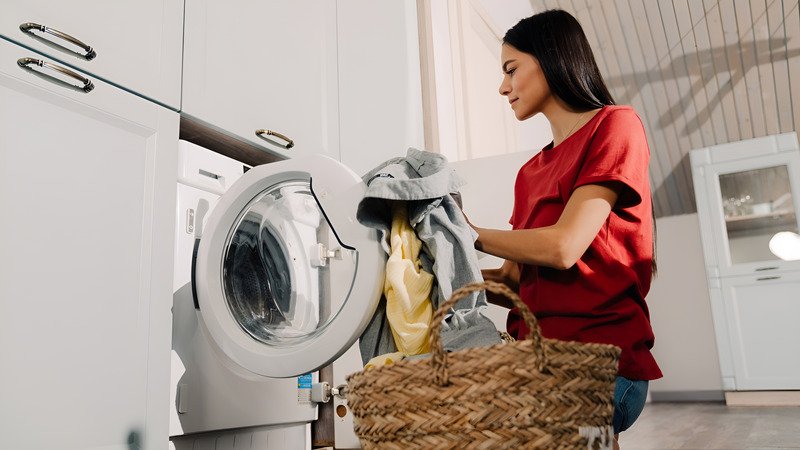
5.3 Careful drying techniques
- Air dry when possible: The best way to dry clothes to prevent pilling is to air dry them. Lay knits flat on a towel or drying rack. Hang other items. This avoids the friction and heat of a dryer.
- If using a dryer, use low heat: If you must use a machine dryer, choose the lowest heat setting possible and remove clothes as soon as they are dry – don’t overdry them.
5.4 Mindful wear
Be aware of things that cause a lot of rubbing when you wear your clothes. For example, crossbody bags, rough backpack straps, or sitting on abrasive surfaces can cause pilling in specific areas. Following the specific washing instructions on your garment’s care label is one of the most important steps in preventing pilling.
Packlove creates high-quality, durable care labels that remain clear and easy to read, wash after wash, helping you give your clothes the best care.
6. How to remove pilling from clothes
If pilling has already appeared on your favorite clothes, don’t despair! In many cases, you can safely remove the pills and make your garments look much newer.

6.1 Effective tools and methods for de-pilling
- Fabric shaver (electric or battery-operated): These small devices have rotating blades under a protective screen that gently shave off pills from the fabric surface. Lay your garment flat on a firm surface and gently glide the fabric shaver over the pilled areas without pressing down too hard. Empty the lint compartment as it fills. Best for most knit and woven fabrics. Be gentle, especially on thinner fabrics, to avoid snagging or cutting the material.
- Pilling comb / sweater comb: These combs have fine, often metal, teeth designed to catch and pull away pills. Lay the garment flat, hold the fabric taut, and gently comb in one direction over the pilled area. Best for knitted items like sweaters. Use gentle strokes to avoid snagging yarns.
- Sweater stone (pumice-like stone for fabrics): A natural pumice-like stone that, when rubbed on fabric, picks up pills and loose fibers. Lay the garment flat and gently rub the stone over the pilled surface. Best for heavier knits. Test on an inconspicuous area first as it can be slightly abrasive.
- Lint brush / clothes brush (for very light pilling): A brush with directional fabric or bristles can sometimes lift very new, loose pills. Brush firmly in one direction over the fabric. Best for very light, surface-level pilling.
- Disposable razor (use with EXTREME CAUTION): A sharp razor blade can slice off pills. This method is risky and can easily damage fabric. If you choose to try it, use a new, clean disposable razor. Stretch the fabric very flat and taut and use extremely light, short, gentle strokes. HIGH RISK of cutting or damaging your garment. We generally advise against this method.
6.2 General de-pilling steps to follow
Always work on a clean, flat, and well-lit surface. Gently stretch the pilled area of the fabric and hold it taut. Work slowly and gently with your chosen tool. Test any tool on a hidden area of the garment first.
6.3 After removing pills
Once you’ve removed the pills, use a lint roller or a soft clothes brush to pick up any remaining loose fibers or debris.
7. Packlove’s insight: The importance of clear care labels
As we’ve seen, one of the best ways to prevent pilling is by taking good care of your clothes, especially during washing and drying. And the first step to good care is understanding how a garment should be treated, which is found on its care label.
At Packlove, we specialize in creating high-quality, custom care labels. Our labels are printed clearly and are made to be durable, meaning they won’t fade or fall apart after just a few washes. This ensures that the crucial washing instructions – like water temperature, wash cycle, and drying advice – remain easy to read for the life of the garment. When you can easily read and follow these instructions, you significantly reduce the chances of causing pilling through improper laundry practices.
Using the right settings means less harsh treatment for your fabrics. Beyond just holding information, Packlove’s care labels are also designed with the garment in mind. We offer materials for labels that are soft and smooth, so the label itself won’t cause unnecessary rubbing (abrasion) against the fabric, which could otherwise contribute to pilling in that area.
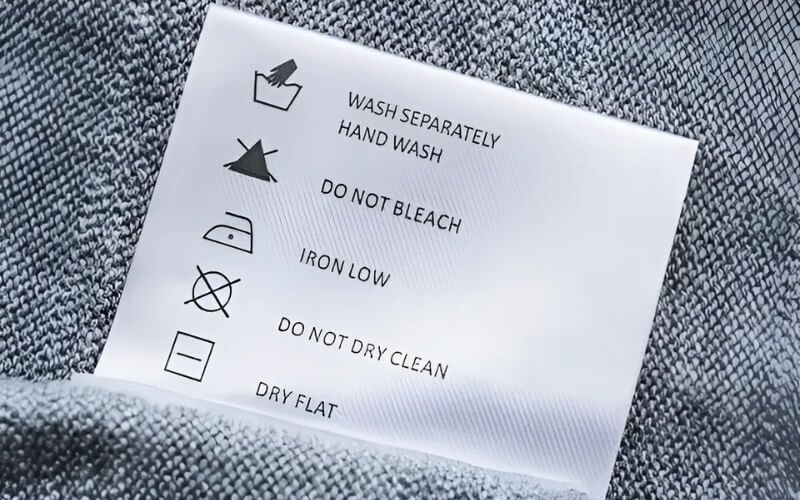
8. Frequently asked questions (FAQs) about fabric pilling
8.1 “Why does my new shirt have fuzz balls already?”
Answer: Sometimes, even new clothes can show pilling quickly. This can happen if the fabric is made with very short fibers, if the weave or knit is loose, or even from rubbing during shipping or in the store. The first few wears and washes often reveal a fabric’s tendency to pill.
8.2 Does pilling get worse over time?
Answer: Generally, yes. If you don’t take steps to prevent pilling or remove existing pills, continued wear, rubbing, and washing will likely cause more pills to form and existing ones to grow larger.
8.3 “What causes fabric pilling on couches?”
Answer: Couches and other furniture (often called upholstery) can pill for the exact same reasons clothes do! It depends on the type of fabric used and how much rubbing it gets from people sitting and moving on it. Daily use creates friction. For couches, look for durable, tightly woven fabrics if pilling is a concern.
8.4 Are anti-pilling treatments applied during manufacturing?
Answer: Yes, some fabric manufacturers apply special chemical treatments or use specific finishing processes to make fabrics more resistant to pilling. Sometimes clothes will have a tag saying ‘anti-pill’ or ‘resists pilling’ if they’ve had such a treatment.
8.5 Is pilling the same as lint?
Answer: No, they are different. Lint consists of loose fibers, dust, or fluff that sits on the surface of your clothes and can usually be brushed or rolled off easily. Pills, on the other hand, are small, tangled balls of fibers that are actually attached to the fabric surface and need to be carefully shaved or combed off.
Have more questions about fabric care, pilling, or need advice on the best labels for your products? Our Packlove team is here to help! Contact us here
Explore more:
So, we’ve learned that those annoying little fabric balls, called pills, are very common. Pilling is usually caused by rubbing (friction), the type of fibers in your clothes (especially short fibers), and how the fabric is woven or knitted. But the great news is, it’s not something you just have to live with! By choosing fabrics carefully, washing and drying your clothes gently, and being mindful of friction during wear, you can greatly reduce pilling. And if pills do appear, you now know several ways to safely remove them. Taking good care of your fabrics and performing regular garment maintenance will help your clothes look fresh, feel great, and last much longer.
We hope these tips from Packlove help you win the battle against pilling and enjoy your wardrobe for years to come! Remember, clear instructions are vital for garment care. For all your custom label needs, including high-quality care labels that help extend the life of your garments, visit Packlove today. Ready to elevate your brand with beautiful packaging and labels?






















